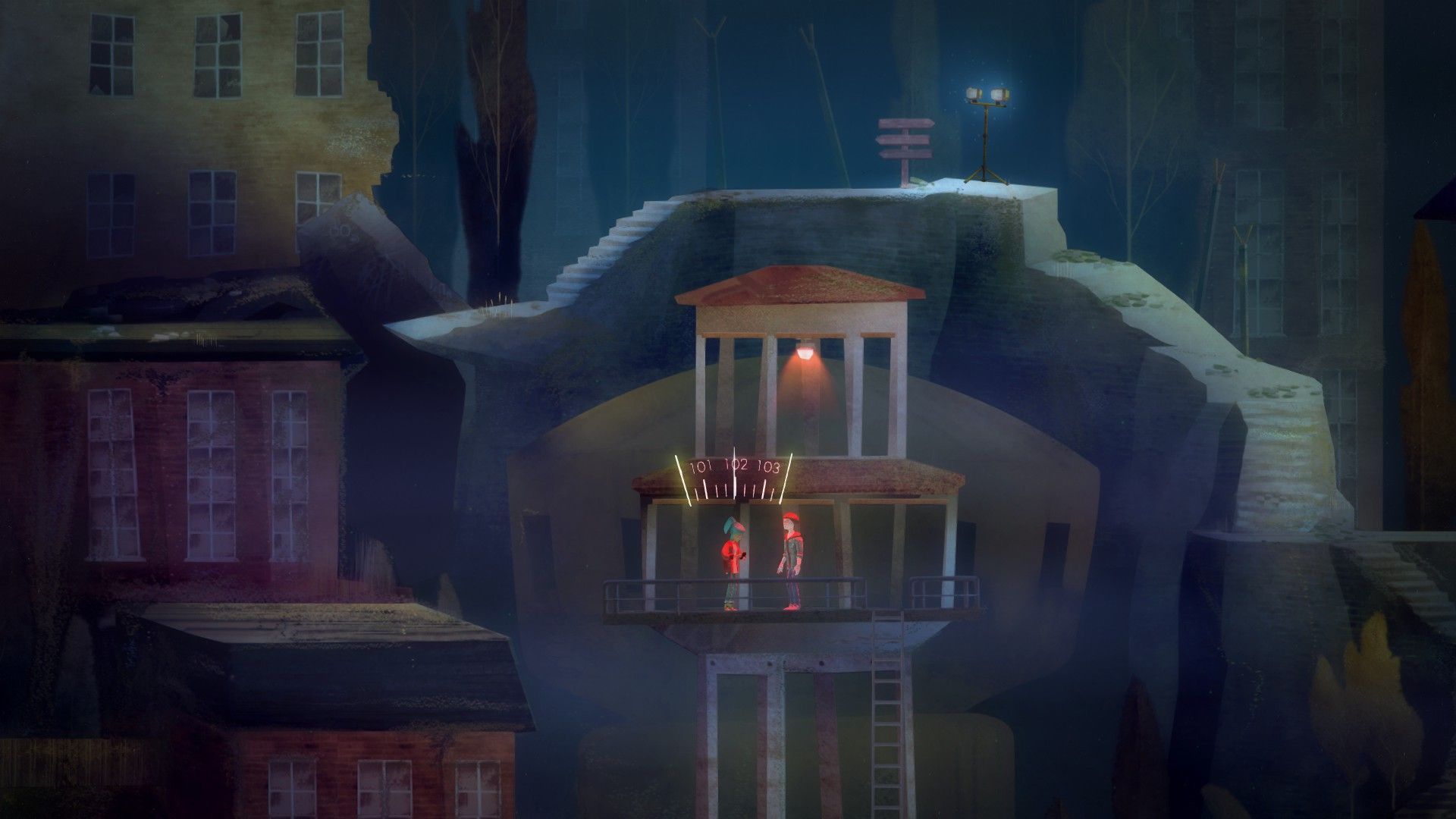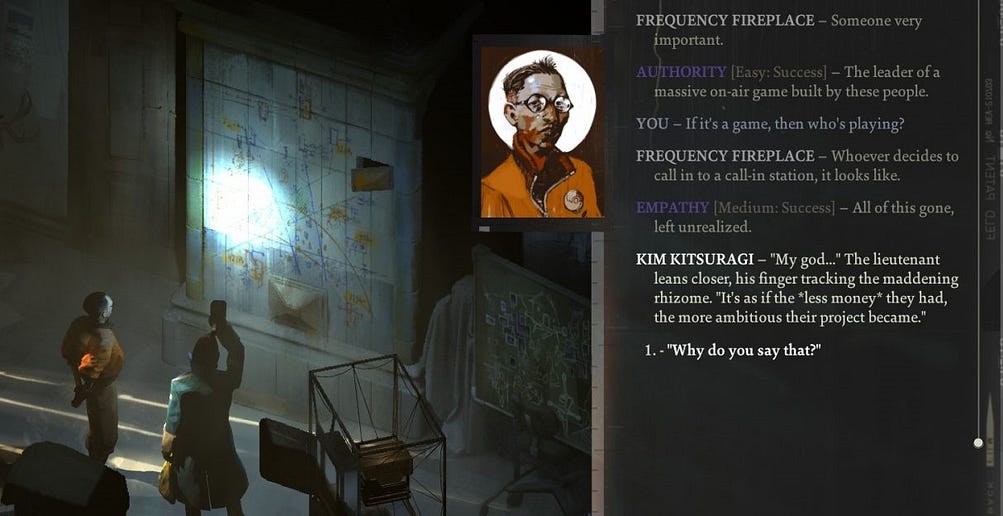The Janus Effect: Games Uncovering New Horrors in Technologies of the Past
Coming to you live from Speedfreaks FM

Night School Studio’s 2015 breakout title Oxenfree tells us a familiar story: a gaggle of teenagers struggles to navigate their hormone-exacerbated social lives while getting lost in an isolated rural environment. When supernatural forces derail their vacation, they must overcome their differences to survive. It’s a coming-of-age story where The Goonies meets Friday The 13th meets War Games, with the combined paranoia of all three bundled together. What sets it apart is the unique fuel of its suspense-horror atmosphere: the specter of defunct radio technology.

By tracing forgotten radio waves to particular locations, players can find and tune in to old transmissions that enrich the world and history of Edwards Island. These hidden messages range from audio tour guides on hiking trails to chilling whispers of the deceased. As players turn their radio dial back and forth to chase the sounds of static, the game’s sense of unease and suspense is palpable — prowling the woodlands of an abandoned campground at night already invokes a sinister atmosphere, with or without the high-pitched wails and low buzzing of invisible interference. It is the introduction of old, buried technology, and the departed lives entangled in it, that elevates the creeping horror of Oxenfree above the classic teen slasher catalogue.
The radio is distant yet familiar, a memory on the very edge of our perception; it is an uncanny ghost in the modern world.
Janus is the Roman god of doors — he stands at the threshold of many dualities we encounter in our lives. The crossroads of youth and adulthood. The treacherous passage between war and peace. The divide between rural farmlands and urbanization. He is the gate between present and future, future and past. Less charitably, he is often invoked in reference to a deceitful person (“janus-faced”), citing his dualized nature.
As an arbiter of transition, we have come to describe Janus’ influence not only as a measure of deceit, but also via the Janus Effect. Colloquially used by psychologists, activists, and leaders alike, the Janus Effect describes a desire to look into the past in order to build the future. Though seemingly paradoxical, history is living — it lives all around us, influencing our current norms. Janus opens the door to our past, and presents to us that history; if we heed the warnings of its ghosts, we may yet create the worlds we believe in.
Even in video games, Janus’ shadow watches at the gates between the unknown and the understood. In Studio ZA/UM’s 2019 indie hit Disco Elysium, the remains of interactive roleplaying game haunt players as they navigate the ruins of an abandoned commercial building.

A sprawling map on one of the walls in this building depicts various call stations connected by veins of radio waves; it is among the only traces left behind after the failed production process. The somber result of unchecked ambition (and a terminal amount of scope creep) leaves desolation in its wake.
The strongest use of dated technology as atmosphere in the world of Disco Elysium also stems from radio technology: a phenomenon known as the Pale. The Pale is described as memory living in static, slowly devouring reality as it spreads over continents and across oceans. And when the game says “devouring”, they mean it — prolonged exposure can lead to Pale Radiation, a condition characterized by an inability to distinguish between past, present, and future events. Untreated, it can be lethal. There are many who wander into the Pale and never return.
Characters in the game cannot see the Pale where it manifests in small amounts, but it is always visible in larger accumulations; the citizens of Revachol perceive it as a looming gray fog on the horizon.
How can we be sure of its existence? Ask an entroponeticist.
Theoretical Entroponetics is the formal name for the study of the Pale in the universe of Disco Elysium. Entroponeticists are aware of its existence through — you guessed it — scientifically measurable radio waves. But it doesn’t take advanced technology to come in contact with the Pale. Much like in Oxenfree, these radio waves are scattered across the game’s environment and manifest in audio transcripts from the past and future.
According to Entroponetic Theorists, invisible wave transmissions from the future (called Crypto-Conveyant Phenomena, or CCP) can be harnessed and interpreted by “Magpies”, as indicated in the left image. While the game does not include these terms (or this image) directly, it depicts them semantically — there are certain religious figures who were seemingly possessed of incredible intuition, and who are known to have used that intuition to rapidly shift humanity’s course in their lifetimes.
These invisible transmissions form a circular binding around time itself: an idea formed in the future is sent back into the past as CCP, where it is then received and transcribed by a Magpie, overwriting its future origin point. Nostalgia influences the characters’ perception, and their perception even has the power to influence nostalgia. History is simultaneously alive and dead in Disco Elysium, revising itself as it moves. Janus himself may have whispered into the ear of lead writer Robert Kurvitz.
Curiously enough, the game’s protagonist is endowed with an uncanny intuition of his own. Whether or not he is a true Magpie is up to interpretation, but through his perspective, players experience the Pale as scattered interactions in the district of Martinaise, the game’s primary setting. One such interaction depicts an eerie conversation with an electric company employee — she seems to be speaking through the protagonist, rather than with him.
We later learn that this company has been defunct for over one hundred years.
Radio has never died. It is immortal, and cannot be replaced. It breathes life into the daily hum of our communications; it is the breath of Wi-Fi signals and waves, it guides passenger aircraft away from collisions, and teaches satellites where and who we are. It still plays rock and roll, ‘80s hits, and classical symphonies on terrestrial channels you can sift through in the car. Though most people in 2022 don’t know how to tune into a given frequency without assistance, the memory lives in our fingertips as we type text messages and emails. Radio is the old god, Janus, sleeping at the bottom layer of our past and imagining the modern world. We are the occupants of his electric dreams.
Therein lies the new fear — the old fear, born again.
